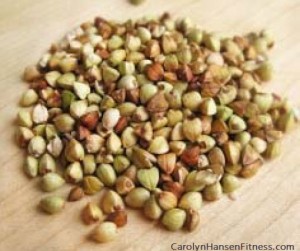 In the search to replace traditional flour many people turn to flax meal (ground flax seeds). With the health benefits that flax seeds provide it seems a natural choice. However, breads that are heavy with flax can sometimes have a very strong over-powering flavor and be a tad bitter.
In the search to replace traditional flour many people turn to flax meal (ground flax seeds). With the health benefits that flax seeds provide it seems a natural choice. However, breads that are heavy with flax can sometimes have a very strong over-powering flavor and be a tad bitter.
Buckwheat on the other hand, has a rather mild, nutty, rich flavor in comparison to flax meal breads. Using a mix of the two is a good solution because you’ll still get the benefits that both these super-foods provide.
Buckwheat is not a grain, it is a fruit seed or pseudograin in the same family as quinoa, wild rice and amaranth and the perfect choice for those on gluten or wheat free diets.
A thistle plant, buckwheat produces fragrant flowers followed by buckwheat groats which are actually seeds and not grains.
High in protein, fiber and B vitamins, offering lots of potassium, some iron, folic acid, calcium, manganese and phosphorus this gluten free superstar is rich with good omega-3 fatty acids and eight essential amino acids.
You can find buckwheat in different forms each bearing their own distinct taste and texture.
Groats: These are the kernels that are left after the inedible outer coating has been stripped off. They resemble grains of oats, wheat or rye in size and can be used with great success in breads, cereals and soups. They are the perfect replacement for rice because they provide a much richer nutritional profile.
Buckwheat Flour: Ground groats are used to make buckwheat flour which in turn makes great breakfast pancakes, breads, waffles, and muffins.
Kasha: Available in coarse, medium or fine grains, kasha is groats that have a unique nutty flavor because they have been roasted.
Sprouting buckwheat offers the ultimate experience in healthy eating since sprouting releases nutrients while preserving enzymes. It also increases its protein, B vitamins and fiber content. Additionally active enzymes in buckwheat sprouts helps with digestion and assimilation.
Buckwheaties are sprouted and dehydrated buckwheat which is perfect as a crunchy breakfast cereal or healthy anytime snack. Topped with almond milk and fresh fruit for breakfast and you’re off to a perfect start.
Sprouting and drying buckwheat is easy:
Soak buckwheat in a bowl using plenty of water for 1-4 hours.
Drain over a small bowl using a sieve or colander.
Buckwheat groats should be rinses once or twice a day until tiny tails sprout (depending on temperature it usually takes between 2-4 days). The tails should not grow much longer than the seed itself or it changes the flavor.
Next they need to be dried using a dehydrator at 115 degrees F or 46 degrees C for a few more hours. If you don’t have a dehydrator you can also dry them using your oven at the lowest temperature setting. And, you can even tap into the power of the sun and dry them outdoors.
Once all those steps are done, simply take your dried seeds and blend in a high speed blender to break them down into flour.
Because buckwheat is high nutritionally, it also appeals to other critters like your kitchen invading bugs, so it should always be stored in an airtight container and if you are located in warm climates or the weather is warm store it needs to be stored in your refrigerator also in the same airtight container. Buckwheat flour needs to be stored in the refrigerator year round. Be sure to rinse your buckwheat under running water before cooking.
Buckwheat is versatile and the perfect food to use in snacks, desserts or even breakfast. You can replace all your white flour recipes with healthier buckwheat flour.
Nutrition plays a HUGE part in determining your overall health. It is often said that you cannot out-train a bad diet, and that is true. This is because when it comes to maintaining your body weight, what you EAT is more likely to affect whether you can attain your health and fitness ideals than what you do in the gym.
So for that reason I created “The Minimalist Exercise And Nutrition Program.”
Speak Your Mind